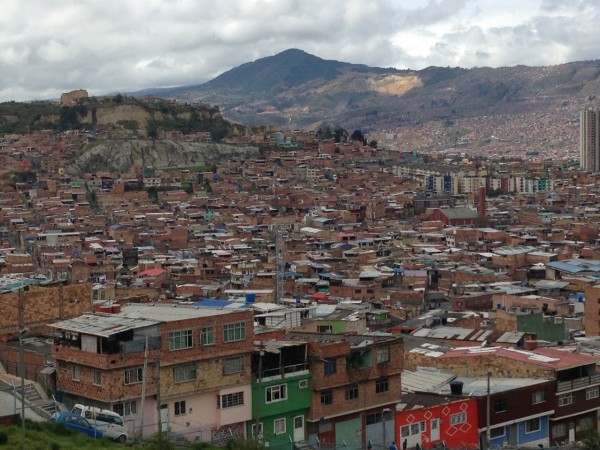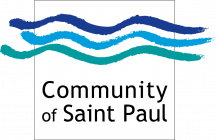
I currently live and work with Fr. Martí Colom (fellow member of the CSP and pastor) in La Resurrección Parish in Bogotá, Colombia. The parish covers three “working-poor” neighborhoods in the south of the capital city. Of the six socio-economic strata that Bogotá is separated into, our area is Stratus 2, “Low.”[1]
When I first arrived in October of last year, Martí told me that many of the parishioners had been hit hard financially by the pandemic, and that it was hard to see so many new people coming to ask for help with food who had never done so before.
Martí’s observation was recently confirmed by data published by the Colombian government. The National Administrative Department of Statistics (henceforth “DANE” for its name in Spanish) published a striking, and distressing, report on the growth of poverty in the country during 2020.[2] It focuses on what it calls “Monetary Poverty,” based on household income. While this is only one metric, that data does serve to show how to show how the dire situation regarding poverty in Bogotá was made much, much worse during the first year of the COVID-19 pandemic, especially regarding those who went from “poor” to “extremely poor.”
The basic measure establishing the lines of poverty and extreme poverty are calculated with monetary values using the household income, per capita, and the cost of a “basic basket of food.”[3] The definition for the line of extreme poverty is focused on the estimation of the cost for maintaining a basic daily caloric intake of 2100 calories per person. And the value set for the line of poverty includes the estimation of some other basic needs and services. Both values are adjusted for the cost of living in the different areas of the country.
For the country as a whole, the DANE Poverty Report calculated the poverty line at about $90 USD, per person, per month.[4] It is important to remember that this is per capita, meaning that it is the sum of the total income of a household, divided by the number of persons living there. For example, in a household of five where both parents work and each make $200 per month, totaling $400, the per capita income of the home is $80 and therefore that household falls below the poverty line. Because of the higher cost of living in the capital city, the amount for the poverty line was set in Bogotá at $123 USD per person, which is just over $492 USD for a family of four, per month.[5]
The DANE Report defines extreme poverty those living in Bogotá at $48 USD per person, or $192 USD for a family of four, per month.[6] For context, the legal minimum wage set by the government in 2020 was $237 per month.[7] That means that in a household of two persons in Bogotá, with one working and making a minimum wage, that family already falls under the poverty line. And in the case of a household of five, with one person making minimum wage, they are considered extremely poor.
Knowing how the lines are defined by DANE, let us now look at how many more people were identified as poor and extremely poor by the government in 2020, compared to 2019.
Comparing 2020 to 2019, per the April DANE report on poverty, there was an increase of 6.8% more of the population under the poverty line (up to 42.5% from 35.7%). Regarding extreme poverty, 5.5% more of the population fell below the line (15.1% from 9.6%). That means that nationally, comparing 2020 to 2019, there were 3.5 million MORE people who fell beneath of poverty line, and 2.8 million MORE who entered into extreme poverty. Per these numbers, in 2020 over 21 million people in Colombia were defined as poor, and of these, over 7.5 million were extremely poor, meaning they have just enough to eat.
Of the increase in the number of the country’s poor in 2020, almost one third was in Bogotá (31.3%). According to DANE there were 2,246,851 persons living under the poverty line in Bogotá in 2019, and in 2020 there was an increase of 1,110,734 more. That represents an increase of 49.4% in just one year! Population growth in the city cannot account for such a large increase.
It is more dramatic when we look at the population that falls under the line for extreme poverty. Keep in mind, this is defined for Bogotá as those living off of $48 USD or less per person, per month. According to DANE, in 2019 there were 344,591 persons in Bogotá living in extreme poverty. In 2020, there were 1,108,836. That is an increase of 764,245 more persons, or 222%! Using the estimated 2020 population of the city of 10,978,000, this means that over 10% of the people living in Bogotá that are defined as extremely poor.[8]
Much of the increase in those identified as extremely poor are surely (but not necessarily), those who have gone from “poor” to “extremely poor.” The DANE report identifies anecdotal evidence of many households that went from having limited income, to no income as all. This is representative of many of the families in La Resurrección Parish. They were “poor” before but are now struggling to have enough to eat.
In fact, if we compare the increase of those considered extremely poor in Bogotá to the nation as a whole, we see that Bogotanos have been particularly hit hard by the pandemic. Bogotá accounts for 27.5% of the increase in those considered extremely in the country. But what is particularly telling is to see how the increase in Bogotá compares to increase in the country. Nationwide, the total number of those considered extremely poor increased by 59.3%, a data point that is mind-boggling and heart-breaking. However, when compared to the 222% increase of those considered extremely poor in Bogotá, it shows that the lower-level income families of the capital city have been affected especially hard by the economic fallout of the pandemic.
Overall, this increase in poverty has led to an increase in inequality within Colombia. One of the measures of inequality within a population is to also look at income. The international standard used for this is an index referred to as the Gini coefficient. A Gini coefficient of 0% represents the hypothetical, perfect income equality within a population. Anything above that represents how far off a population is from this income equality. DANE reports that the Gini coefficient for Colombia was 54.4% in 2020, a significant one year jump up from 52.6%.[9] This possibly puts it at likely the highest in Latin America and is certainly one of the highest in the world.[10] For context, we can compare it to the World Bank estimates for the USA in 2018 with a coefficient of 41.4%, the Dominican Republic in 2019 with a coefficient of 41.9% or Spain with 34.7% in 2018.
In sum, the official data from the Colombian government confirms what we have seen and heard from our parishioners regarding their economic struggles as a result of the pandemic, especially in Bogotá. It also gives some background to the current situation of a country, that has now had two weeks of protests, demanding a vast array of reforms. Some of these numbers in the DANE report are men, women and children that we know by name. They are families who come to our door to ask for food, and who offer intentions in our Masses for dignified employment. Through the parish and the CSP programs, we do what we can to help and to provide a spirit of hope in these trying times. And we join our parishioners in their prayers for employment and more opportunities to break the cycles of poverty. While Colombia surely has a long road ahead for economic recovery, may it be the path towards a more just and peaceful future.
[1] colombia.as.com. The government uses the terms "estratos socioeconómicos", and the terms used are for 1 -bajo bajo, 2 – bajo and 6 – alto.
[2] DANE. 29 abril de 2021. Pobreza Monetaria en Colombia: Resultados 2020. https://www.dane.gov.co/files/investigaciones/condiciones_vida/pobreza/2020/Presentacion-pobreza-monetaria_2020.pdf. See also the Comunidado de prensa on the same report, published April 29, 2021. https://www.dane.gov.co/files/investigaciones/condiciones_vida/pobreza/2020/Comunicado-pobreza-monetaria_2020.pdf. Last accessed 11 May 2021.
[3] The concept of “basic basket of food” to sustain a family is a measure commonly used, including in the USA. This means of defining the poverty line comes from the United Nations Economic Commission for Latin America and the Caribbean (CEPAL, in the Spanish).
[4] $331,688 Colombian pesos (COP) per capita. I use here in this analysis a rough average exchange rate during the 2020 year of 3,700 COP to 1 USD.
[5] $455,030 COP per month, per person.
[6] $178,607 COP, per person.
[7]$877,803 COP. I do not include the extra amount required for the travel costs of the employee, if applicable, because the presumption is that that amount is spent in transportation by the employee to and from work. In fact, oftentimes, the cost is significantly more. From Decreto No. 2360 del 2019.
[8] There is another 20% of the city is that is “poor”, with a total of almost 31% of its population that falls under the poverty line.
[9] According to the World Bank, in terms of the Gini coefficient, Colombia had a high of 58.7% in 2000 and low of 49.7% in 2017. The World Bank also put the 2019 in Colombia at 51.3%, which would mean an even higher jump from 2020.
[10] Using the most recent data from the World Bank, which would not show the effects of the pandemic. https://data.worldbank.org/indicator/SI.POV.GINI. Last accessed 11 May 2021.









